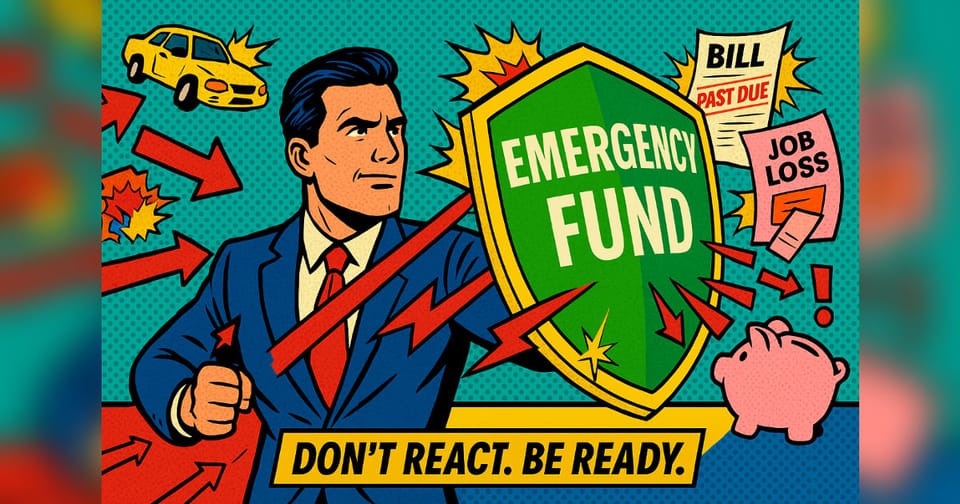Your Emergency Fund Is Your First Investment🪙

🛡️Before You Build Wealth, Build a Safety Net
If investing is building a house, your emergency fund is the foundation. But too many people skip it. They get excited to invest, throw money into the market… and then life happens.
A car breaks down. A job is lost. An unexpected bill lands. And suddenly, their financial plan isn’t just shaken—it’s shattered.
At Always Principle First, we believe that before you grow your money, you need to protect your stability. An emergency fund is your financial safety net. It’s what keeps your long-term strategy intact when life throws curveballs—which it always will.
This week, we’re going back to basics—not to slow you down, but to set you up. Because when your cash cushion is solid, your mindset shifts. You stop reacting, and you start making moves with confidence. And that’s when real growth begins.
📌 This Week’s Principle
Security comes before strategy.
Your investment plan is only as strong as your ability to weather surprise expenses. An emergency fund protects your progress and gives your long-term goals breathing room.
🔎 Principle in Practice
If you’re just starting:
- Save 1 month of expenses in a high-yield savings account.
- Set an auto-transfer: $50–$200/month.
- Build up to 3–6 months of runway.
🚫 False Belief of the Week
“Emergency funds are boring. I’d rather invest.”
An emergency fund isn’t just cash—it’s confidence. It protects your strategy from life’s curveballs.
📈 Smart Move of the Week
Open a separate, untouchable savings account titled: “Do Not Spend — Emergency Only.” Labeling helps prevent emotional withdrawals and reinforces its purpose.
🧱 Quick Principle to Remember
Liquidity = peace of mind.
Having quick access to cash reduces panic and gives you the power to act without sabotaging your investment plan.
🔗 Explore Further
Build your financial safety net with these trusted resources:
🔗An Essential Guide to Building an Emergency Fund – CFPB
Government-backed steps to create a basic emergency fund, even if you live paycheck-to-paycheck. Ideal for beginners and low-income earners.
🔗When to tap into your emergency fund? – John Hancock
This article from John Hancock explains how to recognize true financial emergencies and responsibly use—and replenish—your emergency fund when unexpected expenses arise.
🔗Importance of Emergency Fund – New York Life
Covers the emotional and strategic benefits of having a cash buffer so your investments remain untouched in stressful times.
🔗Understanding the Need for an Emergency Fund – University of Phoenix
This article highlights how even small amounts saved regularly can become the cushion that prevents financial disaster.
🔗Why Your Emergency Fund Should Be $35,000 – Investopedia
Presents a bold but realistic savings goal, backed by household data, to help you determine what size fund actually fits your life.
Final Thought
It’s easy to overlook the emergency fund. It doesn’t feel exciting. It doesn’t promise high returns. But the truth is, it’s one of the most powerful investments you can make.
Because it gives you time. It gives you options. And it gives you peace.
At Always Principle First, we believe long-term wealth starts with short-term stability. If you want to invest boldly, you need to feel safe first. And that safety doesn’t come from guessing the market—it comes from knowing you’re prepared when life shows up unannounced.
Build the buffer. Protect your focus. Let your foundation grow stronger.
The safety net isn’t a step backward—it’s your springboard forward.